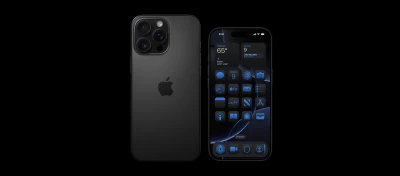The MacBook Air models, including MacBook Air M1, MacBook Air M2, and MacBook Air M3, are known to generate heat, especially under heavy workloads. This is primarily due to the following reasons:
- Intensive Tasks: When the MacBook Air runs resource-intensive applications, it uses more power, leading to more heat generation.
- Design Constraints: The MacBook Air's thin and compact design provides less space for heat dissipation, contributing to overheating.
- Passive Cooling: Unlike the MacBook Pro models that use active cooling systems, the MacBook Air models use passive heat spreaders (without a fan) that conduct heat away from the chip.

Thermal Throttling
Thermal throttling is a mechanism that prevents damage to the CPU/GPU by reducing its performance when it starts overheating. This process involves lowering the CPU's core clock speed, resulting in a lower power draw and eventually leading to less heat generation.
Thermal throttling usually occurs when your CPU hits critical temperatures, typically around 194 Fahrenheit or 90 Celsius(defined by the BIOS setting). Beyond these temperatures, the system will likely shut down to protect internal components.
In the case of the MacBook Air, thermal throttling can occasionally slow it down enough to make it no faster than the model it replaces. However, this is something many users will never encounter in their day-to-day use.
In conclusion, while the MacBook Air models are designed for efficiency and portability, they can experience heating issues under heavy workloads due to their design and cooling mechanisms. This can lead to thermal throttling, which is a protective measure to prevent damage to the system but can impact performance.
Mitigating Overheating in MacBook Air M1/M2/M3
The MacBook Air models, including MacBook Air M1, MacBook Air M2, and MacBook Air M3, are designed for portability and efficiency. However, their compact design and lack of an active cooling system can lead to overheating under heavy workloads. Here are some strategies to mitigate this issue:
- Avoid Covers: The MacBook Air's body is made of metal, which acts as a heat radiator. Using a plastic cover or full-body sticker can hinder this heat dissipation process. Therefore, it's advisable to avoid using such covers when performing intensive tasks.
- Optimize Workloads: Try to balance your workloads to prevent the system from overheating. Running multiple resource-intensive applications simultaneously can cause the system to heat up quickly. If possible, close unnecessary applications and tabs.
- Proper Ventilation: Ensure your MacBook Air is on a hard, flat surface that allows for optimal heat dissipation. Avoid using it on soft surfaces like beds or couches, which can block the heat radiation.
- Software Updates: Keep your system updated. Apple often releases software updates that can improve the system's management of resources and heat.
- Power Settings: Adjust your MacBook's energy settings. Reducing screen brightness, turning off keyboard backlight, and disabling unnecessary features can help reduce heat generation.
- External Cooling Pad: Consider using an external cooling pad. While the MacBook Air doesn't have an internal fan, an external cooling pad can help dissipate heat.
- Professional Assistance: If overheating persists, it may be a sign of a hardware issue. In such cases, it's best to seek professional assistance.

Conclusion
While the MacBook Air models are designed for portability and efficiency, they can experience heating issues under heavy workloads due to their design and cooling mechanisms. However, by following the above strategies, users can mitigate these issues and ensure their MacBook Air continues to perform optimally. Remember, the key is to balance performance needs with thermal management to enjoy the best of what the MacBook Air has to offer.

















